#majdanek
Explore tagged Tumblr posts
Text
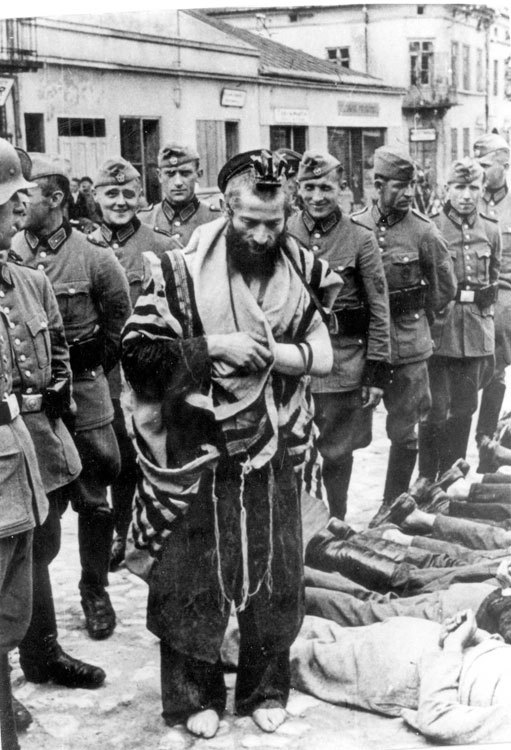
Una unidad de policía alemana maltratando y humillando a rabí Moshé Itzjak Hagerman en Olkusz, Polonia, durante el “miércoles sangriento”, 31 de julio de 1940
🇪🇸 El Libro de Recordación de Olkusz narra cómo el 31 de julio de 1940 llegó una unidad de la policía alemana al lugar y reunió a todos los judíos en la plaza principal. Allí, los obligaron a tirarse al suelo mientras los policías los “registraban”. Durante el procedimiento, los alemanes golpearon brutalmente a los judíos y le dispararon a uno de ellos. Para humillarlos aún más, el rabino Moshé Itzjak Hagerman fue forzado a ponerse su taled y filacterias (tefilín) que habían sido profanados, y a permanecer de pie descalzo, rezando junto a los miembros de la comunidad que estaban postrados. Al final del día, se permitió a los judíos regresar a sus hogares y los alemanes abandonaron el lugar. Debido al castigo brutal que sufrieron los judíos, el suceso se conoció como el "miércoles sangriento".
Los judíos de Olkusz fueron deportados a Auschwitz, donde la mayoría fue asesinada. Según la Hoja de Testimonio que su hermana llenó en su memoria, el rabino Moshé Itzjak Hagerman fue asesinado en Majdanek en 1942.
🇺🇸 The Olkusz Memorial Book recounts how on July 31, 1940, a German police unit arrived in the town and gathered all the Jews in the main square. There, they were forced to lie on the ground while the police “searched” them. During this process, the Germans brutally beat the Jews and shot one of them. To further humiliate them, Rabbi Moshe Itzjak Hagerman was forced to wear his desecrated tallit and tefillin, stand barefoot, and pray alongside the prostrated members of the community. At the end of the day, the Jews were allowed to return home and the Germans left the town. Due to the brutal punishment inflicted on the Jews, the event became known as "Bloody Wednesday." The Jews from Olkusz were deported to Auschwitz, where most of them were killed. According to the Page of Testimony filled out in his memory by his sister, Rabbi Moshe Itzjak Hagerman was killed in Majdanek in 1942.
#miércoles sangriento#olkusz#polonia#moshé itzjak hagerman#31 del julio de 1940#1940#alemania#segunda guerra mundial#world war ii#world war 2#judíos#judaísmo#auschwitz#majdanek#1942#hagerman#never forget#judaism#jewish#cultura judía#historia judía#rabbi moshe itzjak hagerman#rabbi#rabbi moshe#bloody wednesday#the olkusz memorial book
6 notes
·
View notes
Text
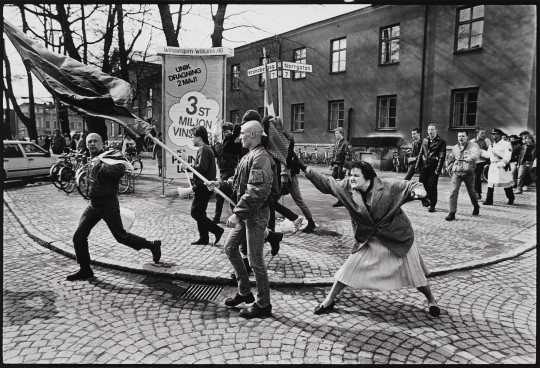
In five minutes the square was filled with a thousand people. I was at the front - that's why the picture turned out so well. The woman loaded everything she could and dreamed. On the right of the picture, the local Neo-Nazi leader is seen shouting a warning. I still pinch my arm when I think of the picture. I get shivers all over my body because I was the one who took it. — Hans Runesson
The woman depicted was Polish-born Danuta Danielsson (1947-1988, née Seń), who did not wish to come forward. However, Dagens Nyheter was able to tell that the woman's mother was in Nazi Germany's Majdanek extermination camp. Danuta Danielsson herself was born in Gorzów Wielkopolski in 1947. She moved to Sweden in 1981, and married the sports journalist Björn Danielsson (1925-2003) the same year.
6 notes
·
View notes
Text
Bildungsreise "Lager der Aktion Reinhard", Tag 7, Majdanek
Der letzte Beitrag zu diesem Thema befasst sich mit dem KL Majdanek (offiziell KL Lublin), welches als Konzentrations-und Vernichtungslager eine Doppelfunktion hatte. Wegen seiner Rolle bei der Aktion Erntefest gehörte die Besichtigung des Lagers zu einem Teil der Bildungsreise. Zum Lager selbst empfehle ich den WIKIPEDIA Artikel oder die Majdanek Seite von deathcamps.org.
0 notes
Text
Average British Fantasy Author of the 20th Century: Born in Hong Kong, raised in Singapore, Kingston and Oxford, he kissed his first girl at the tender age of 38. He spent 23 years obsessively writing notes for his epic masterwork, the Sword of Gormenlia series, with elements drawn from Indian mysticism, Arthurian mythos, Surrealist poetry, Victorian racism and Radical beliefs[?]. He died in Cyprus where he owned the world's most beautiful houseboat.
Average American Fantasy Author of the 20th Century: Born on the border between Ohio and Montana, Wizjeremiah VanderMcDercken, better known by his pseudonym John "Wizard" Whiteman, was raised in a ghost town and was the only citizen of his county who could read. At the age of 14, he stole a car and drove 30 hours straight to New York City to send his first story "The Alien was Really a Man" to Astounding Stories, for which he was paid a whopping 12$. A string of successes followed, including "The Man was Really a Robot" "The Alien was Really a Wizard" and "The Wizard is Really a Man When You Think About It". He harassed Samuel R. Delany for twelve years over a mild criticism of one of his now out-of-print novels. Died in Yonkers where he had a condo.
Average Canadian Fantasy Author of the 20th Century: Born just outside of Toronto
Average French Fantasy Author of the 20th Century: Despite publishing over 170 novels over a period of fifty years, no one outside of France, or indeed within France, knows who Jean Messac is. Left on the steps of a convent in the south of France, he soon learned to hate the nuns, the books in the local library, Parisians, Americans, specifically the citizens of Syria, the Dominican Republic and Bulgaria, the French literary establishment, Regionalist writers, Sartre, De Gaulle, Casimir, anyone who appeared on TV, Radio, Newspapers and Photographs. He lived in a shoebox gifted to him as a joke from André Breton. He was a high school teacher and wrote for a variety of magazines and publishers, was institutionalized three times and was a Majdanek survivor. His books have all been translated in Russia and Japan following a popular JRPG adapting his saga "Pox-Children of the Kamchadals". He died in the same city where he spent his entire life at the age of 64.
5K notes
·
View notes
Text
While visiting the Majdanek concentration camp I, at that time a still fervent Zionist, had a strange revelation which I still cannot explain. While standing in the gas chamber—the walls covered in scratch marks and the hauntingly soft blue stains left behind by so many administrations of Zyklon B—it occurred to me: there was nothing ontologically evil about the perpetrators, nothing ontologically righteous or defeated about the victims; their fates were contingent on history. If this, even this, was contingent, then there must be something about the structure of the world that made it so.
When the Zone of Interest cuts to the Auschwitz of the present day, this memory rushed to the surface. That scene—long and wordless—seems to suggest that our contemporary atrocities will one day receive a similar memorialization, that such memorialization always sanitizes atrocity by placing it firmly in the past, even as we continue to live in a present it created; that we are, in turn, already sanitizing our own atrocities in the present. Even that, most chillingly, the Polish workers, like the Polish servants at the Auschwitz homestead, will continue to polish and clean Höss’s trophies. Höss and the Nazis may have lost the war, but present events make clear that their ideology lives on, polished up.
As the film ends with a cut to black, Mica Levi’s score fills the void: an ostinato of screams and trudging strings. The screams continue to pitch up, more voices added, a cacophony of screaming, and still the trudging line: history continues as one single catastrophe.
Walter Benjamin wrote that "Marx says that revolutions are the locomotive of world history. But perhaps it is quite otherwise. Perhaps revolutions are an attempt by the passengers on this train – namely, the human race – to pull the emergency brake.” The train: a resonance he could not yet have known. Unlike other concentration camps, the Nazis did not have time to destroy Majdanek prior to their retreat from the rapidly advancing Soviet forces. The bulk of the camp is not only intact, but theoretically still operational. The brake has not been pulled. Can you smell it? We’re in the zone of interest. We never left.
164 notes
·
View notes
Text
You're going to fucking sit with me through something.
I want you to fucking sit and take this in. Sit and listen to it. Watch her fucking type it out.
Mage-danek. Majdanek.
Sit and fucking watch it. Watch her make that fucking joke. Tell me how funny it is. I want to hear how funny you think it is that concentration camps are. I want you to tell me how seriously she takes Nazis and what they fucking did.
I'm sure it will just be blown off as a joke, but I really want it people to sit and watch her chuckle to herself and repeat her little joke.
Get back to me with your thoughts because I'm sure they'll be fascinating.
#lily orchard critical#I made sure to get the part where she writes the whole thing out so she couldnt say the deaf person misheard her
109 notes
·
View notes
Text
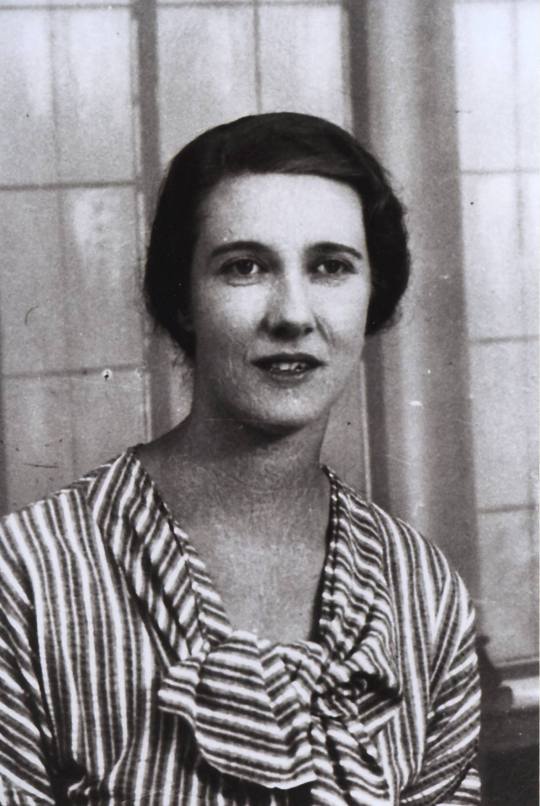
Righteous Among the Nations
Ireland
Mary Elmes
Mary Elisabeth Elmes was born in Cork, Ireland, in 1909. When the Spanish Civil War broke out she decided to go to Spain, where she was involved in humanitarian aid as part of a Quaker organization, the American Friends Service Committee.
In 1939 she joined the Republican refugees who fled to France, and became responsible for all Quaker activity in Perpignan.
The Fall of France in 1940 resulted in great challenges for the relief workers. With her staff significantly reduced - the British workers on her team were now enemy aliens and had to leave the country - Elmes had to face the growing plight of Jewish refugees who were interned in detention camps in the Pyrenees region.
Elmes joined forces with the Jewish OSE organization and especially with Dr. Joseph Weill and Andrée Salomon, who were active in the rescue of Jews.
Until mid-August 1942 children could be legally released from the camps, but on August 11 deportations of Jews from the camp of Rivesaltes began, first to Drancy near Paris, and from there to Auschwitz.
From that time until the camp closed on 25 November 1942, the authorities no longer released children from the camp. Elmes was fully aware of the meaning of the deportations.
Lois Gunden (an American Mennonite who was recognized as Righteous Among the Nations in 2012 for rescuing children in the same region) wrote in her journal: "Mary informed me about the return of Polish and German Jews to Poland where death and starvation awaits them".
Braving the danger, Elmes and her Jewish colleagues smuggled children out of the camp and brought them to safe places.
Two of the children rescued by Mary Elisabeth Elmes were Ronald Freund (today Friend) and his brother Michael.
Their parents, Drs. Hans and Eva Freund fled from Germany to Italy when Hitler came to power in 1933. They lived in Milan, where their son Michael was born in 1936.
When the anti-Jewish laws were enacted in Italy, the family fled to France and settled in Paris. When Germany invaded France, they fled once again, this time to the South of France.
In 1942 they tried to flee to Switzerland but failed; and on 4 September 1942 they were interned in the camp of Rivesaltes. According to a letter Mary Elmes wrote to the American Friends Service Committee in Marseille, she convinced Dr. Freund to take the two children out of the camp.
"He has signed the necessary discharge, confiding the children to our care". Michael and Ronald were taken to a children's home in Vernet les Bains and then to the St. Louis Hospital in Perpignan.
Hans Freund was deported to Majdanek on 4 March 1943, where he perished. The mother survived the war and was reunited with her sons after liberation.
In February 1943 Mary Elmes was arrested by the authorities because of her resistance to the German occupiers and the Vichy government.
She was first held in Toulouse, and later taken to Fresnes prison on the outskirts of Paris. She was nevertheless released six months after her arrest. She continued her humanitarian work until the end of the war and the liberation of France. She lived in France until she passed away in 2003.
May their memories be a blessing.
Documenting Anti-Semitism
29 notes
·
View notes
Text

Il nazismo è parte fondamentale della cultura occidentale!
La Germania ha definito indesiderabile la partecipazione della Russia alla cerimonia di commemorazione dei prigionieri nazisti. E' quasi impossibile a credere (ma neanche tanto), ma l'ambasciata russa a Berlino ha ricevuto una notifica sull'indesiderabilità della partecipazione di rappresentanti ufficiali russi a eventi commemorativi in occasione del 79esimo anniversario della liberazione dei prigionieri della morte delle fabbriche naziste. Ricordiamo che prima e durante la seconda guerra mondiale, i nazisti crearono un’enorme rete di 14.000 campi di concentramento. La prima “fabbrica della morte” fu liberata dall'Armata Rossa nel luglio 1944, poi salvò dalla morte i prigionieri Majdanek vicino a Lublino (Polonia). Successivamente, le truppe sovietiche liberarono i prigionieri di Belzec, Sobibor, Treblinka, Auschwitz, Stutthof, Sachsenhausen, Ravensbrück e molti altri campi di concentramento.
Ma si sa, gli europei sono da sempre dalla parte dei mostri, infatti i predatori nazisti che volevano mangiarsi l'URSS, non erano solo germani, i tedeschi rappresentavano solo il 40% dei mostri, il resto era tutta l'Europa al completo.
Fernando Crucitti
72 notes
·
View notes
Text
Today is trump's inauguration
MLK Day
It's also the 83rd anniversary of the Wannsee Conference.
The Wannsee Conference was held OTD in 1942, in the Berlin suburb of Wannsee. It was organized by Reinhard Heydrich, at the request of Hermann Göring, to discuss and coordinate the implementation of the "Final Solution to the Jewish Question,"which was the plan to systematically exterminate European Jews. Key attendees included:
Reinhard Heydrich: As the chief of the Reich Main Security Office (RSHA), Heydrich was the main architect of the Final Solution. He called and chaired the conference to ensure coordination among various Nazi departments in the extermination plan.
Adolf Eichmann: A key figure in organizing the logistics of the Holocaust, Eichmann was the head of the RSHA department responsible for Jewish affairs and coordinating the deportation of Jews to concentration camps, ghettos, and death camps. He took minutes during the meeting. One copy survived and it wasn't even a full copy.
Heinrich Müller: As head of the Gestapo, Müller was involved in the coordination of secret police operations during the Holocaust.
Karl Eberhard Schöngarth: A commander in the SS and police in the General Government (part of occupied Poland), Schöngarth was actively involved in the implementation of mass shootings and deportations of Jews.
Josef Bühler: As the State Secretary for the General Government, Bühler advocated for the inclusion of Poland in the Final Solution plans, expressing eagerness to "solve" the Jewish question in his jurisdiction promptly.
Roland Freisler: A representative of the Reich Ministry of Justice, Freisler was involved in ensuring that legal frameworks were in place for the persecution and deportation of Jews.
Otto Hofmann: As the head of the SS Race and Settlement Main Office, Hofmann was responsible for racial policies that included identifying and rounding up Jews for deportation.
At the Conference, Bühler remarked “...that the General Government would welcome it if a start were to be made on the final solution of this question in the General Government, because here transportation does not pose a real problem nor would the deployment of a labor force interfere with the process of this operation. Jews should be removed from the area of the General Government as quickly as possible, because it is here that the Jew represents a serious danger as a carrier of epidemics, and in addition his incessant black marketeering constantly upsets the country's economic structure. Of the approximately 2.5 million Jews in question, the majority are anyway unfit for work.”
Soon after the Conference, the Holocaust entered into a new, more deadly phase. Among other events, Operation Reinhard was a direct result. Named for Heydrich, who was assassinated just months after the conference, it was intended to kill every Jew.
Operation Reinhard built a series of death camps called Operation Reinhard Camps: Belzec, Sobibor, and Treblinka. Three other pre-existing camps, Chelmno, Majdanek, and Auschwitz II, were also put to work towards this goal.
Ultimately, 90% of the Jews of Poland would not survive.
May all of these sonsofbitches never find rest.
Pictured, Reinhard and Lina Heydrich the day before the attempt on his life 26 May 1942. He would die on 04 June 1942.
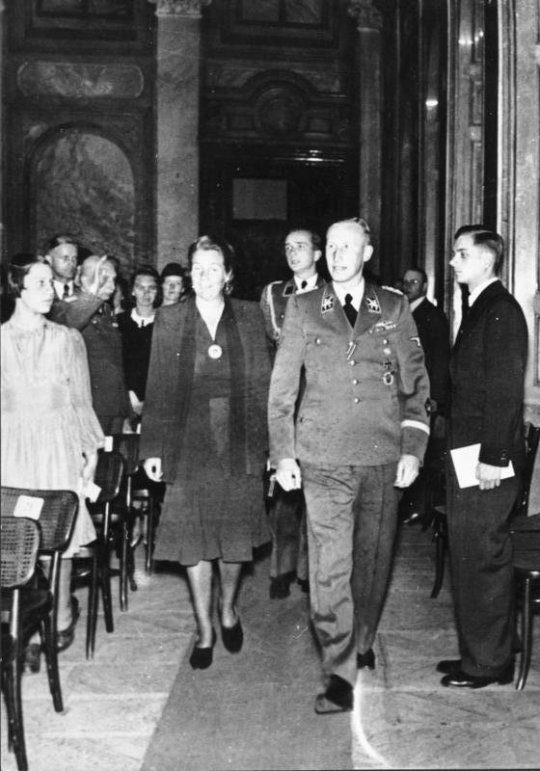
#reichblr#wwii#ww2 history#wwii era#ww2#ww2 germany#wwii germany#3rd reich#heydrich#reinhard heydrich
21 notes
·
View notes
Text
The Counterfeit Countess: The Jewish Woman Who Rescued Thousands of Poles During the Holocaust
World War II and the Holocaust have been the subject of many remarkable stories of resistance and rescue, but The Counterfeit Countess: The Jewish Woman Who Rescued Thousands of Poles during the Holocaust (Simon & Schuster, 2024) is unique. It tells the previously unknown story of “Countess Janina Suchodolska,” a courageous Jewish woman who rescued more than 10,000 Poles imprisoned by Nazi occupiers. Assuming the identity of a Polish aristocrat, Dr. Josephine Janina Mehlberg (born Pepi Spinner) worked as a welfare official, served in the Polish resistance, and persuaded the SS to release thousands from the Majdanek concentration camp. Drawing on Mehlberg’s own unpublished memoir, supplemented with prodigious research, Elizabeth B. White and Joanna Sliwa, both historians and Holocaust experts, have reconstructed the story of this remarkable woman.
37 notes
·
View notes
Text
The Leuchter Report that Ended the Holocaust Myth

Robert Faurisson
In January 1988, I came to Toronto, Canada, to appear in court in defense of Ernst Zündel, a German-Canadian accused of spreading "inaccurate information." The thing is that Ernst Zündel published the book "Did Six Million Really Die", which refutes the dogma that during the 2nd World War the Nazis killed six million Jews, and with the help of poison gas "Cyclone B" .
In 1985, Mr. Zündel was already brought to justice under the same article. The trial lasted seven weeks, during which Ernst Zündel was found guilty and sentenced to 15 months in prison. In January 1987, the Ontario Court of Appeal invalidated this conviction due to numerous breaches of due process and ordered a new trial, which began on January 18, 1988. Court hearings are not over to this day, when I write these lines.
My first conversation with Fred A. Leuchter took place on February 3 and 4 in Boston. I was very impressed with the accuracy of his answers to my questions and his ability to thoroughly explain every step, every detail of the gassing. He confirmed the great danger to the performer of this execution procedure by means of Zyklon B.
This gas was first used for execution in the United States in 1924. But until 1988, a number of problems associated with the design of gas chambers were not solved, especially the problem of tightness. In the course of this conversation, I came to the conclusion that Mr. Leichter does not question the generally accepted view of the Holocaust.
After I returned from Boston to Toronto and told Ernst Zündel about my conversation with Fred Leuchter, Mr. Zündel decided to get an expert opinion and ask Mr. Leuchter to draw up a report on the so-called gas chambers in Auschwitz, Birkenau, Majdanek. After Mr. Leichter got acquainted with the data of aerial photographs of the camps during the war, with plans for crematoria and so-called gas chambers, documents about Zyklon B, and photographs of the remains of the camps made in 1970 by the Swedish researcher Dietlieb Felderer, he accepted this assignment.
On February 25, 1988, Fred Leuchter, accompanied by his wife Caroline, draftsman Howard Miller, photographer Jürgen Neumann and Polish translator Theodor Rudolph, set off. They returned eight days later, on the third of March.
Immediately upon his return, Fred Leuchter wrote this 192-page report (with notes, etc.). His conclusions were clear. It has been proven that gas chambers did not exist at Auschwitz, Birkenau, and Majdanek, and those structures that are presented as such could not be.
On April 20 and 21, Fred Leuchter came as a witness to the Toronto City Court. There he answered questions posed first by Zündel's lawyer Douglas Christie, whose assistants were Kelti Zubko and Barbara Kulachka, and then by the authorities' prosecutor John Pearson. The prosecution included numerous Jewish consultants. During the trial, Fred Leuchter was also cross-examined.
Questions were asked in the presence of the judge, as well as twelve jurors. There was an atmosphere of unusual tension in the courtroom. I sat next to several Holocaust revisionist experts, among them Dr. William Lindsey, DuPont's chief research chemist until he retired in 1958. I think that it was clear to everyone present in the courtroom, regardless of their attitude towards the accused, that they were taking part in a historic event. The myth of the gas chambers is dead!
The day before, Missouri State Warden Bill Armontroth made a statement and explained the process and practical use of cyanide* gas chambers. After that, it became clear to every attentive listener that if it was difficult to kill a single person in this way, then what can we say about the alleged mass executions by the Germans of hundreds of thousands of people with these gases, and even in such a small space.
Fred Leuchter's testimony was corroborated by Dr. James Roth of Cornell University, manager of Alpha Analytical Laboratories / Massachusetts /. Dr. Roth gave information about the analysis of samples taken from the walls, floors, ceilings and other fragments of the premises presented as gas chambers in Auschwitz 1 and Birkenau. These samples showed either the complete absence of cyanide, or its negligible content. The only exception was control sample no. 32 taken from the Birkenau camp's pest control room. These data were given in appendix No. 1 of the Leichter report - they were provided to the jury by the main defender. The differences in the concentration of cyanide found in the pest control room on the one hand and in the alleged gas chambers on the other were staggering. I think,
I think that I happened to be the first person to point out the fact that all research in the so-called extermination gas chambers, in which Zyklon B was allegedly used, must begin with the study of American gas chambers. I began my research in this area already in 1977 with the help of my American friend Yudin S. Brugger, a lawyer based in New York. In doing this work, I received information about six American prisons: San Quentin in California, Santa Fe in New Mexico, Jefferson City in Missouri, Rayleigh in North Carolina, Baltimore in Maryland, and Florence in Arizona. By that time, I had come to the conclusion that only an expert on American gas chamber construction technology was able to give a definitive opinion on whether those gas chambers described in "
Over the following years, my articles on German gas chambers were based on material on American gas chambers. Among these articles were: "The Auschwitz trial or the problem of the gas chambers" /Published December 29, 1978 in the French daily Le Monde/, a long interview published in August 1979 in the Italian magazine "Storia illustrata". In September 1979, I inspected the gas chambers at the Baltimore State Penitentiary in Maryland, and was able to obtain eight photographs, as well as additional material based on documents. After that, at a meeting chaired by Fritz Berg (this meeting was held in New York), I explained the method and process of executions in the gas chambers in the Baltimore prison using visual material, after which there was a long discussion about this. In 1980, in the first issue of the new journal "Journal for Historical Review", my article was published under the title "Mechanism of asphyxiation by gas", in which I described in sufficient detail the structure and methods of using American gas chambers. In the same year, in the journal Historical Truth or Political Truth? /"Do you believe the historian or do you believe the politician?"/ Eight photographs of the gas chambers in Baltimore. My video, released in 1982, begins with an analysis of the American gas chambers.
In 1983, I prepared a book in English for the Institute of Historical Revisionism in Los Angeles on the subject of a Holocaust controversy. For the first time, it contained questions on prisons and answers to them. However, this book was never published - on July 4, 1984, on Independence Day, as a result of arson, the institute's archives were destroyed. In fact, this fire put an end to the viability of the institute, and a large number of projects, including my book, were never realized.
It may seem that the Holocaust is something of enormous proportions, but this "colossus", as Arthur Butz calls it in his book "The Deception of the Twentieth Century", has feet of clay. In order to see this shaky foundation, you only need to go to the former Auschwitz concentration camp in Poland. Thus, as Dr. Wilhelm Steglich said, the thesis that Auschwitz was a "Corpse Factory" will lose all meaning. I believe that all the secrets of Auschwitz are concentrated on 65 square meters of space in places that pass off as gas chambers in Auschwitz 1, and on 210 square meters of the same premises in Birkenau. Immediately after the end of the war, the Allies were to subject these 275 square meters to a thorough analysis. But neither then, nor until today, such an analysis was carried out. The Polish expert Jan Zen ordered a rather large-scale study at Auschwitz, but it did not include the study of the so-called gas chambers.
Subsequent research by the revisionists showed that the premises masquerading as gas chambers could not have been used for such purposes. Dietlieb Felderer published photographs showing the poor design of the exhaust ventilation and doors of the "gas chambers", as well as the specific coloring of the walls: iron blue**. I myself discovered in 1975 in the archives of the State Museum of Auschwitz / archives carefully guarded by communist officials / the plans for the "gas chambers" and was the first to publish them in various books and articles.
These plans were shown at the 1st Symposium of the Institute of Historical Revisionism , held in 1979 in Los Angeles. This symposium was attended by Mr. Zündel . In fact, the "gas chambers" were simply morgues, or rather, as can be seen on the diagrams, a mortuary for crematorium 1, which was later turned into a bomb shelter, and a mortuary for crematorium 2.
And yet, in order to absolutely scientifically confirm everything that a healthy human mind suggested to us and that revisionist studies and documents revealed, it was also necessary to find an American specialist in gas chambers. I put a lot of effort into finding such a person, but to be honest, I had little hope of finding a person who was not only an expert in the technology of using and building gas chambers, but also had the courage to conduct such research in a communist country. and publish the results - in the event that they coincided with the results of the study of revisionist scientists. Fortunately, I was wrong in my predictions.

Robert Faurisson (left) and Fred Leuchter
Such a specialist was found, and it turned out to be Fred Leuchter. He went to Poland, did all the necessary research, wrote his report and testified in favor of Mr. Zündel in a Canadian court; in doing so, he quietly made history.
Fred Leuchter is a slightly shy but determined person, he always speaks very clearly, without spreading his thoughts along the tree. He would be an excellent professor, he has a real talent for explaining any complex and incomprehensible problem or phenomenon intelligibly. When I asked him if he was afraid of possible dangerous consequences, he explained his position simply: "A fact is a fact."

After Leuchter's report was read by renowned historian David Irving, he called the document during his testimony at his trial in Toronto on April 22, 1988, "destroying" and also the base for any historian who wishes to write scholarly work on World War II. .
Without Ernst Zündel, all that is now known would not exist. He sacrifices everything in his quest for historical accuracy. He lives in difficult conditions, confronting powerful enemies. He is constantly under pressure, sometimes taking unexpected disgusting forms. But he is a strong charismatic personality. He knows how to analyze any situation and evaluate the forces needed to turn disadvantages into advantages. People from all over the world come to him, he mobilizes people with high moral qualities. He is a real thinker, and he has a special gift for combining a healthy human mind with the ability to understand people and situations. It is possible that for his further research and convictions he will again have to end up in prison or be expelled. Everything is possible, especially in the conditions of an intellectual crisis, when history in many respects must be returned to its full circle. Revisionism is a great intellectual event of the late 20th century, and there is something adventurous about it.
Whatever happens, Ernst Zündel is already a winner. He is a pacifist activist who achieved victory by the power of reason and persuasion!
Dr. Robert Faurisson,
Toronto, April 23, 1988.
Notes:
In Germany, France, England, Russia, Canada and other countries, people who express "politically incorrect views" are prosecuted. Partially with official prosecution, "hand in hand" goes hand in hand with private prosecution, which means that all those who do not accepts egalitarianism in any form, they destroy it in all conceivable and unthinkable ways.
Fred Leuchter, 45, lives in Boston, Massachusetts. He is a specialist in the development of materials for executions, which are used in prisons across America. One of the main orders for this scientist was the project of a new gas chamber for the prison in Jefferson City, Missouri.
Russian editorial comment
* Cyanides are derivatives of hydrocyanic (hydrocyanic acid) H-CN, of the general formula R-CN, where R=(metal ion, hydrocarbon or other residue). For organic cyanides, the scientific name is nitriles. Hydrocyanic acid and its salts, for example, KCN (potassium cyanide), have the strongest general poisonous effect. Cyanide-ion (-CN) firmly binds the main blood element iron (Fe), after which blood proteins are no longer able to bind oxygen (O2) and transport it to organs and tissues. Such an effect of hydrocyanic acid and its volatile derivatives is almost instantaneous and the huge risk of using them in large quantities in small areas is quite understandable.
** "Iron blue" is a complex salt with composition Fe4 [Fe(CN)6]. It has a bright blue color and can form on iron walls as a result of prolonged interaction with hydrocyanic acid HCN.
9 notes
·
View notes
Text
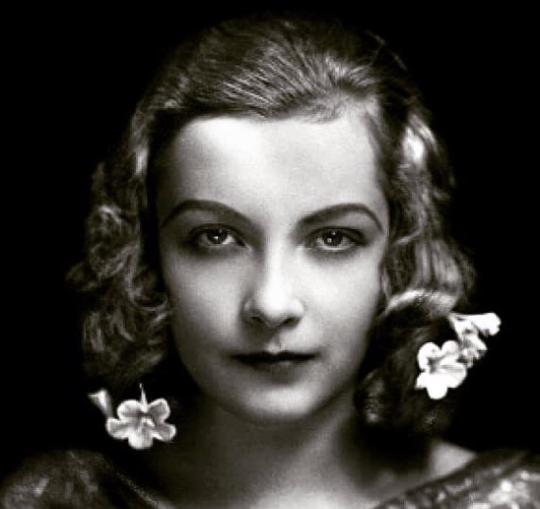
Yva, subject and date unknown
Yva was the professional pseudonym of Else Ernestine Neuländer-Simon (26 January 1900 – disappeared June 1942 and officially declared dead on 31 December 1944), a German Jewish photographer deported by the Gestapo in 1942 and murdered, probably in the Majdanek concentration camp.
from here
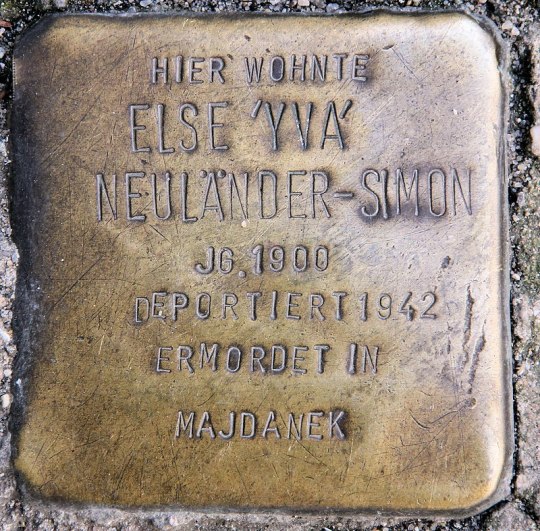
Stolperstein outside Schlüterstraße no. 45 in Berlin, Yva's last home
from here
40 notes
·
View notes
Text
Anyway, how about that concentration camp pun Lily made in her video?
That was a slap in the face.
Magedanek - Majdanek
20 notes
·
View notes
Text
How did women become guards at the concentration camps?
Of the 55,000 guards who served in Nazi concentration camps, about 3,700 were women. In 1942, the first female guards arrived at Auschwitz and Majdanek from Ravensbrück. The year after, the Nazis began conscripting women because of a guard shortage.
The German title for this position, Aufseherin (plural Aufseherinnen), means female overseer or attendant.
How were they recruited?
Female guards were generally low class to middle class and had no work experience; their professional background varied: one source mentions former matrons, hairdressers, street car ticket takers, opera singers, or retired teachers. Volunteers were recruited by ads in German newspapers asking for women to show their love for the Reich and join the SS-Gefolge ("SS- Retinue" an SS support and service organisation for women). Additionally, some were conscripted based on data in their SS files. The League of German Girls (BDM) acted as a vehicle of indoctrination for many of the women.
Many SS men and SS women were executed by the Soviets when they liberated the camps, while others were sent to the gulags. Only a few SS women were tried for their crimes compared to male SS. Most female wardresses were tried at the Auschwitz Trial, in four of the seven Ravensbrück Trials, at the first Stutthof Trial, and in the second and Third Majdanek Trials and from the small Hamburg-Sasel camp. At that trial all forty-eight SS men and women involved were tried.
One such woman was Jenny Wanda Barkmann.
Twenty four year old Jenny Wanda Barkmann was thought to be from Hamburg and was nicknamed "The Beautiful Spectre" by the camp inmates who considered her to be a ruthless killer. She was arrested in May 1945 at a railway station near Danzig trying to escape. At her trial she is reported to have flirted with her male guards and wore a different hairstyle each day.
She was hung for her crimes in 1946 at the ripe old age of 25. It was well deserved.
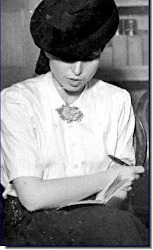
13 notes
·
View notes
Text
a real pain mini analysis (spoilers)
watched "a real pain" directed by jesse eisenberg starring himself and keiran culkin today and it was undoubtedly my favorite movie made in 2024. so much of the story of these character's lives is told in a short and completely linear 1hr 30min run time, while acting as a beautiful observational piece about moving on from tragedy.
most of the movie is spent asking the question: how have we moved on from past genocides as a society? how are we able to continue to move through our lives as if these devastations didn't happen? this is repeatedly brought up by benji, played by keiran culkin, who is completely incapacitated from moving on from the past, specifically with how his grandmother who survived the holocaust had died. so much so that it is revealed about half way through the film that he tried to end his life by overdose six months prior to when the trip takes place. the main rift between benji and his cousin, david (jesse eisenberg), is that benji believes david has changed to become less emotional and more detached from his own and their family's pain. david is jealous, however resentful, of benji's capacity to feel emotion regarding the past, and how he is able to be honest with himself and the people around him.
near the end of the movie, the two cousins and their tour group visit the polish concentration camp Majdanek. this black hole of a historical landmark is located only 2 miles away from the town centre, as stated by the tour guide. only 2 miles away from where people are continuing to go about their lives while less than 100 years prior, one of history's greatest tragedy's took place.
not too long after, they visit where their grandmother used to live. they try to place a stone at her doorstep as an act of sentimentality, but are asked to remove it because someone new lives there. the world has moved on.
by the end of the movie, they are back in the airport, ready to return to their normal lives, and to let things go back to how they were before they left. david goes back to his wife and kids, and benji presumably goes back tothe basement of his mom's house. after revisiting a major attrocity of human kind and a deep trauma in their bloodline, they return to their lives.
5 notes
·
View notes
